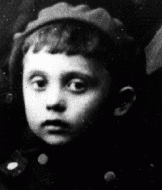You searched for: %E5%85%83%E5%AE%87%E5%AE%99%E7%90%86%E8%B4%A2%E7%B3%BB%E7%BB%9F%E6%BA%90%E7%A0%81%E5%BF%AB%E9%80%9F%E6%90%AD%E5%BB%BA%E3%80%90TG%EF%BF%BD%EF%BF%BD%EF%BF%BD%EF%BF%BD%EF%BF%BD%EF%BF%BD%EF%BF%BD%EF%BF%BD%EF%BF%BD@EK7676%E3%80%91%E5%B9%B3%E5%8F%B0%E5%8C%85%E7%BD%91%E6%90%AD%E5%BB%BA%E5%85%83%E5%AE%87%E5%AE%99%E7%90%86%E8%B4%A2%E7%B3%BB%E7%BB%9F%E6%BA%90%E7%A0%81%E5%BF%AB%E9%80%9F%E6%90%AD%E5%BB%BA%E3%80%90TG%EF%BF%BD%EF%BF%BD%EF%BF%BD%EF%BF%BD%EF%BF%BD%EF%BF%BD%EF%BF%BD%EF%BF%BD%EF%BF%BD@EK7676%E3%80%91%E5%B9%B3%E5%8F%B0%E5%8C%85%E7%BD%91%E6%90%AD%E5%BB%BAs6Hgo9HGvG
<< Previous | Displaying results 151-200 of 225 for "%E5%85%83%E5%AE%87%E5%AE%99%E7%90%86%E8%B4%A2%E7%B3%BB%E7%BB%9F%E6%BA%90%E7%A0%81%E5%BF%AB%E9%80%9F%E6%90%AD%E5%BB%BA%E3%80%90TG%EF%BF%BD%EF%BF%BD%EF%BF%BD%EF%BF%BD%EF%BF%BD%EF%BF%BD%EF%BF%BD%EF%BF%BD%EF%BF%BD@EK7676%E3%80%91%E5%B9%B3%E5%8F%B0%E5%8C%85%E7%BD%91%E6%90%AD%E5%BB%BA%E5%85%83%E5%AE%87%E5%AE%99%E7%90%86%E8%B4%A2%E7%B3%BB%E7%BB%9F%E6%BA%90%E7%A0%81%E5%BF%AB%E9%80%9F%E6%90%AD%E5%BB%BA%E3%80%90TG%EF%BF%BD%EF%BF%BD%EF%BF%BD%EF%BF%BD%EF%BF%BD%EF%BF%BD%EF%BF%BD%EF%BF%BD%EF%BF%BD@EK7676%E3%80%91%E5%B9%B3%E5%8F%B0%E5%8C%85%E7%BD%91%E6%90%AD%E5%BB%BAs6Hgo9HGvG" | Next >>
-
Law for the Imposition and Implementation of the Death Penalty
ArticleLearn more about the Law for the Imposition and Implementation of the Death Penalty, which the Nazis enacted after the Reichstag Fire Decree in 1933.
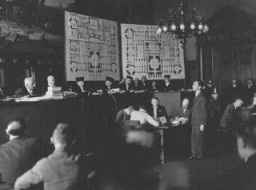
-
Wilek (William) Loew describes forced labor in Lvov
Oral HistoryWilek was the son of Jewish parents living in the southeastern Polish town of Lvov. His family owned and operated a winery that had been in family hands since 1870. Wilek's father died of a heart attack in 1929. Wilek entered secondary school in 1939. Soon after he began school, World War II began with the German invasion of Poland. Lvov was in the part of eastern Poland annexed by the Soviet Union. Although the Soviets took over Wilek's home and the family business, Wilek was able to continue his…

-
Hajj Amin al-Husayni: Arab Nationalist and Muslim Leader
ArticleHajj Amin al-Husayni claimed to speak for the Arab nation and the Muslim world and sought an alliance with the Axis powers during WWII. Learn more about his actions

-
Hodonín U Kunštátu (Hodonín bei Kunstadt) (Roma camp)
ArticleIn March 1942, the Hodonin camp was classified as a camp for Roma. It was a transfer station during deportation to Auschwitz-Birkenau. Learn about the camp and its history.

-
Tuvia Bielski
ArticleRead the Jewish Partisan Educational Foundation's short biography of Tuvia Bielski.
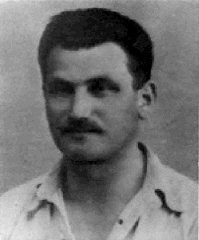
-
German air campaign in the Low Countries
FilmThe Junkers (Ju) 87, known as the "Stuka," spearheaded the Blitzkrieg ("lightning war") attacks that were decisive in the western campaign in 1940. Stuka dive-bombers closely supported German ground forces. They destroyed enemy strong points, aircraft, and airfields, and spread panic in rear areas. Although slow and easily shot down by Allied fighters, the Stukas proved devastatingly effective in the German invasions of Poland and western Europe, where Germany enjoyed superiority in the air. Stukas caused…
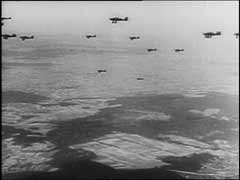
-
Stand Fast
SongErich Frost (1900–87), a musician and devout Jehovah's Witness, was active in the religious resistance to Hitler's authority. Caught smuggling pamphlets from Switzerland to Germany, he was imprisoned in the Sachsenhausen concentration camp near Berlin where he composed this song in 1942. Later deported to a labor camp at Alderney, Channel Islands, Frost survived the war and returned to Germany to serve the Watchtower Society. "Fest steht," reworked in English as "Forward, You Witnesses," is among the…
-
Chaia Gurvitz
ID CardFrom a Jewish family, Chaia lived outside Kovno, a city with a large Jewish population that was renowned for its Hebrew school system. Chaia ran a grocery store with her husband, a retired shoemaker, and their daughter Yenta. 1933-39: Chaia is expecting her daughter Feiga, Feiga's husband, Josef, and her grandson, Abraham, for dinner. Feiga works so hard all week in her beauty shop, Chaia is glad she can help out by preparing the big Sunday meal. She has baked a special cake for Abe. Chaia hopes the…

-
Feiga Malnik
ID CardRaised in a Jewish family, Feiga lived with her husband, Josef, in Kovno, a city with a large Jewish community of 38,000. Kovno was situated at the confluence of two rivers, and with its opera company, chic stores and lively nightclubs, it was often called "Little Paris." Feiga was a beautician and Josef was a barber, and together they ran a shop in downtown Kovno. 1933-39: Every day Josef and Feiga walk to their shop, which is near their house. It's hard work, being a beautician--Feiga is on her feet…

-
Josef Malnik
ID CardRaised in a Jewish family, Josef lived with his wife, Feiga, in Kovno, a cosmopolitan city that was picturesquely situated at the juncture of two rivers and was known as the "Little Paris." Josef was a barber, his wife was a beautician, and together they ran a shop in downtown Kovno. 1933-39: Every day Josef and Feiga walk to their shop which is not far from their house. It's hard work being a barber--Josef is on his feet most of the day, seven days a week including a couple of hours on Sunday. He has…

-
Personal Stories: Jewish Partisans
ArticleBrowse a series of short biographies from the Jewish Partisan Educational Foundation.

-
Szlamach Radoszynski
ID CardSzlamach was one of six children born to Yiddish-speaking, religious Jewish parents. Szlamach's father was a peddler, and the Radoszynski family lived in a modest apartment in Warsaw's Praga section on the east bank of the Vistula River. After completing his schooling at the age of 16, Szlamach apprenticed to become a furrier. 1933-39: During the 1930s Szlamach owned a fur business. Despite the Depression, he was hoping the economy would turn around so that he could make enough money to move into his own…

-
Isachar Herszenhorn (Irving Horn)
ID CardIsachar was born to a Jewish family in the Polish city of Radom, approximately 75 miles south of Warsaw. The city was the center of Poland's leather-tanning industry. Isachar's father worked as a salesman for a nearby tanning factory. His father was a successful salesman and the family lived comfortably. 1933-39: During registration for Isachar's first-grade class in 1934, a Jewish boy was pushed down the stairs. When his mother confronted the principal about the incident, all he said was that the boy had…

-
Laura Litwak
ID CardLaura was the second of five children born to religious Jewish parents in the industrial city of Lvov. She was often called affectionately by her nickname, Lorka. Coming from an educated family living in a multi-ethnic part of Poland, she grew up speaking Polish, Russian, German and Yiddish. As a young woman, she earned a humanities degree from St. Nicholas University in Lvov. 1933-39: In April 1935 Laura became Mrs. Daniel Schwarzwald. Her husband was a successful lumber exporter, and they lived in a…

-
War Refugee Board: Background and Establishment
ArticleIn January 1944, FDR established the War Refugee Board which was charged with “immediate rescue and relief of the Jews of Europe and other victims of enemy persecution.”

-
Alexander Schenker describes working as a lumberjack in a labor camp in Siberia
Oral HistoryFollowing the German invasion of Poland in September 1939, Alexander and his family fled eastward to Lvov. His father then fled to Vilna, hoping to obtain visas for the family to escape through Japan. The rest of the family was caught while trying to cross border into Lithuania in order to meet up with Alexander's father. They returned to Lvov. Alexander and his mother were later arrested for refusing to declare Soviet citizenship. They were sent to a labor camp in the Soviet interior. After their release…

-
Immediate American Responses to the Nazi Book Burnings
ArticleThe Nazi book burnings of 1933 sparked responses from anti-Fascist organizations, Jewish groups, and writers in the United States. Learn more.

-
SS and the Camp System
ArticleIn 1933-1934, the SS seized control of the Nazi camp system. Learn more about the persecution, forced labor, and murder that occurred under SS camp rule.

-
Anne Frank: Diary
ArticleThe Diary of Anne Frank is often the first exposure readers have to the history of the Holocaust. Learn about Anne's diary, including excerpts and images.

-
Ardeatine Caves Massacre
ArticleNow a national memorial site, the Ardeatine Caves outside Rome were the site of a German reprisal for a bombing by Italian resistance operatives in March 1944.
-
Introduction to the Definition of Genocide
ArticleExplore an outline of the main definitional elements of the crime of genocide and how significant aspects of the law have developed through recent cases.

-
Antisemitism
ArticleThroughout history Jews have faced prejudice and discrimination, known as antisemitism. Learn more about the long history of antisemitism.
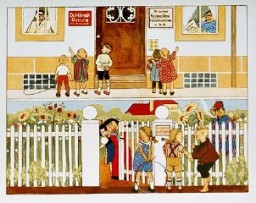
-
How Were the Crimes Defined?
ArticleToday, a body of international criminal law exists to prosecute perpetrators of mass atrocities. Learn about principles and precedents from the Nuremberg Charter and the IMT.
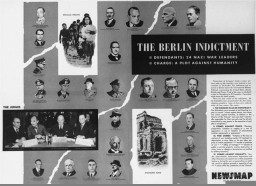
-
Sobibor: Key Dates
ArticleExplore a timeline of key events in the history of the Sobibor killing center in the General Government, the German-administered territory of occupied Poland.

-
Genocide Timeline
ArticleKey dates in the use of the term genocide as part of the political, legal, and ethical vocabulary of responding to widespread threats of violence against groups.

-
Esterwegen Concentration Camp
ArticleEsterwegen was part of the Nazi regime’s early system of concentration camps, created to hold people arrested as opponents of the new regime.
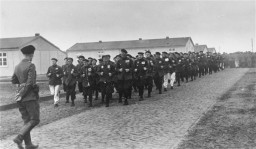
-
Oskar Schindler
ArticleOskar Schindler's actions to protect Jews during the Holocaust saved over 1,000 Jews from deportation. Learn more about Schindler's List.

-
Israel Yitzak Kisielnicki
ID CardThe youngest of three children, Israel Yitzak was born to Jewish parents living 35 miles east of Warsaw in the small, predominantly Jewish town of Kaluszyn. Israel's mother was a housewife, and his father was a merchant who often traveled on business, by horse and wagon, to Warsaw. Israel attended public school and also received religious instruction. 1933-39: When Germany invaded Poland several days ago, many kids Israel's age, afraid of what would happen if the Germans occupied Poland, fled to the USSR,…

-
Henny Fletcher Aronsen describes liberation from a death march from Stutthof
Oral HistoryHenny was born into an upper-middle-class Jewish family in Kovno, Lithuania. She and her brother attended private schools. In June 1940 the Soviets occupied Lithuania, but little seemed to change until the German invasion in June 1941. The Germans sealed off a ghetto in Kovno in August 1941. Henny and her family were forced to move into the ghetto. Henny married in the ghetto in November 1943; her dowry was a pound of sugar. She survived several roundups during which some of her friends and family were…
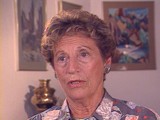
-
Notice of Gregor Wohlfahrt's execution
DocumentAuthorities in Berlin, Germany, sent this notice to Barbara Wohlfahrt, informing her of her husband Gregor's execution on the morning of December 7, 1939. Although he was physically unfit to serve in the armed forces, the Nazis tried Wohlfahrt for his religious opposition to military service. As a Jehovah's Witness, Wohlfahrt believed that military service violated the biblical commandment not to kill. On November 8, 1939, a military court condemned Wohlfahrt to beheading, a sentence carried out one month…

-
Hermann Ludwig Maas
ArticleHermann Ludwig Maas, a Protestant pastor in Heidelberg, Germany, was a rescuer and clergyman who stood in solidarity with the Jewish community.
-
Dr. Robert Ritter visits a "Gypsy camp"
PhotoDr. Robert Ritter talks to several residents in a Zigeunerlager ("Gypsy camp"). Hamburg, Germany, 1940. During the Nazi era, Dr. Robert Ritter was a leading authority on the racial classification of people pejoratively labeled “Zigeuner” (“Gypsies”). Ritter’s research was in a field called eugenics, or what the Nazis called “racial hygiene.” Ritter worked with a small team of racial hygienists. Among them were Eva Justin and Sophie Ehrhardt. Most of the people whom Ritter studied and…

-
Eva Justin interviews a Romani woman interned in a "Gypsy camp"
PhotoA color photograph of Eva Justin interviewing a Romani woman interned in a "Gypsy camp." Vienna, Austria, 1940. During the Nazi era, Dr. Robert Ritter was a leading authority on the racial classification of people pejoratively labeled “Zigeuner” (“Gypsies”). Ritter’s research was in a field called eugenics, or what the Nazis called “racial hygiene.” Ritter worked with a small team of racial hygienists. Among them were Eva Justin and Sophie Ehrhardt. Most of the people whom Ritter studied and…

-
A family interned in a "Gypsy camp"
PhotoA family stands outside of their wagon while interned in a Zigeunerlager ("Gypsy camp"). In the background, children are crowded around Eva Justin. Justin worked for the Center for Research on Racial Hygiene and Demographic Biology. Schleswig-Holstein, Germany, 1938. During the Nazi era, Dr. Robert Ritter was a leading authority on the racial classification of people pejoratively labeled “Zigeuner” (“Gypsies”). Ritter’s research was in a field called eugenics, or what the Nazis called…

-
Kristallnacht
ArticleOn November 9–10, 1938, the Nazi regime coordinated a wave of antisemitic violence. This became known as Kristallnacht or the "Night of Broken Glass." Learn more

-
Polish Victims
ArticleIn September 1939, the Germans launched a campaign of terror intended to destroy the Polish nation and culture. Learn more about the German occupation of Poland.

-
The United States and the Refugee Crisis, 1938–41
ArticleNazi Germany’s territorial expansion and the radicalization of Nazi anti-Jewish policies triggered a mass exodus. Learn about the US and the refugee crisis of 1938–41.
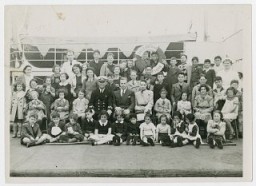
-
How did postwar trials shape approaches to international justice?
Discussion QuestionThe aftermath of the Holocaust raised questions about the search for justice in the wake of mass atrocity and genocide. The World War II Allied powers provided a major, highly public model for establishing internati...

-
Deportations to Killing Centers
ArticleWith help from allies and collaborators, German authorities deported Jews from across Europe to killing centers. The vast majority were gassed almost immediately after their arrival in the killing centers.

-
Leo Schneiderman describes conditions on a freight car during deportation from Lodz to Auschwitz
Oral HistoryThe Germans invaded Poland in September 1939. Leo and his family were confined to a ghetto in Lodz. Leo was forced to work as a tailor in a uniform factory. The Lodz ghetto was liquidated in 1944, and Leo was deported to Auschwitz. He was then sent to the Gross-Rosen camp system for forced labor. As the Soviet army advanced, the prisoners were transferred to the Ebensee camp in Austria. The Ebensee camp was liberated in 1945.

-
Thomas Buergenthal describes differing perspectives on international justice
Oral HistoryJudge Thomas Buergenthal was one of the youngest survivors of the Auschwitz and Sachsenhausen concentration camps. He immigrated to the United States at the age of 17. Judge Buergenthal devoted his life to international and human rights law. He served as chairman of the United States Holocaust Memorial Museum’s Committee on Conscience; was named the Lobingier Professor of Comparative Law and Jurisprudence at the George Washington University Law School; and served for a decade as the American judge at…
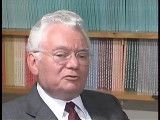
-
Concentration Camps, 1933–39
ArticleLearn about early concentration camps the Nazi regime established in Germany, and the expansion of the camp system during the Holocaust and World War II.

-
The Holocaust in Macedonia: Deportation of Monastir Jewry
ArticleIn March 1943, Bulgarian authorities transported the entire Jewish community of Monastir to a transit camp from which they were deported to Treblinka.

-
Vidkun Quisling
ArticleVidkun Quisling, Minister President of Norway from 1942 to 1945, was a Norwegian fascist and Nazi collaborator. His last name has come to mean “traitor” or “collaborator.”

-
Kurt Gerstein
ArticleSS officer Kurt Gerstein was horrified by what he witnessed at the Belzec killing center. Learn about how he recorded what he witnessed and about his postwar fate.
-
The Rescue Mission of Gilbert and Eleanor Kraus
ArticleIn the spring of 1939, Gilbert and Eleanor Kraus rescued 50 Jewish children from Vienna, Austria, by bringing them to the United States. Learn about their mission.
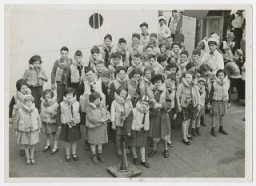
-
Darfur
ArticleFrom 2003 to 2005, an estimated 200,000 civilians died as a result of a campaign of violence in Darfur by the Sudanese government. In 2004, the US Secretary of State called this violence a genocide.

-
Life After the Holocaust: Aron and Lisa Derman
ArticleAfter WWII and the fall of the Nazi regime, Holocaust survivors faced the daunting task of rebuilding their lives. Listen to Aron and Lisa Derman's story.
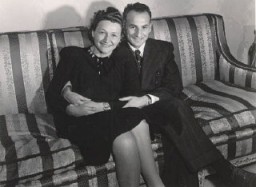
-
Buchenwald
ArticleThe Nazi regime established the Buchenwald camp in 1937. Learn about the camp’s prisoners, conditions there, forced labor, subcamps, medical experiments, and liberation.

-
David Morgensztern
ID CardThe second of four children, David, or Duvid as he was called by his family, was born to Jewish parents living 35 miles east of Warsaw in the small predominantly Jewish town of Kaluszyn. David's mother and grandmother ran a newspaper kiosk in town, and his father worked as a clerk in the town hall. David attended public elementary school. 1933-39: War has broken out between Poland and Germany. Many people are afraid of what might happen if the Germans occupy Poland and have decided to flee to the Soviet…
